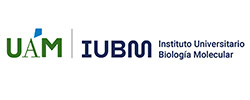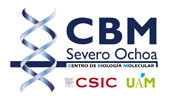Cell signalling during imaginal development in Drosophila
Cell architecture & organogenesis
Prof. Ana Ruiz Gómez. Profesora Titular. Departamento de Biología Molecular. UAM.
(Staff scientist with PI Dr. José F de Celis, CSIC-CBMSO)
We aim to understand how genetic information is translated into spatial patters of cell differentiation in epithelial tissues. We use the Drosophila melanogaster wing as our main experimental model and we carry out three research projects. The first project involves the analysis of the functional requirements of Drosophila genes in the wing. We grouped the 14.000 Drosophila genes into 16 functional groups (Fig. 1) and screened UAS-RNAi lines targeting 10918 of these genes. We classified the resulting phenotypes into morphological classes affecting the size, pattern or differentiation of the wing (Fig. 1), and correlated each mutant phenotype with the expression of the corresponding gene. Wing phenotypes reveal functional requirements, either in basic cellular functions impinging on cell viability or in wing-specific functions related to its growth and patterning, and together with gene expression patterns constitute an optimal entry point to undertake detailed functional analysis. The second project is the analysis of the transcriptional effects of one Drosophila transcription factor (Spalt) that has a prominent role in the development of the wing disc. Spalt is a nuclear protein containing three pairs of Zn fingers and its human orthologs are involved in Towles-Brokes disease and Okihiro syndrome. We have identified a minimal DNA response element for Spalt through the analysis of the regulatory region of one of its downstream genes and now we are defining the effects of Spalt on chromatin conformation as well as searching for Spalt co-repressors with the objective of understanding the Spalt mechanism of action. The third project concerns the Ras gene. Mutations in human Ras are common in multitude of cancers, and the Drosophila Ras gene has been used to model cancer progression in flies. Using Crisper/Cas9 and homologous recombination we have generated Drosophila transgenic lines carrying altered versions of the fly and human Ras genes. We are characterizing the consequences of activating Ras mutations when the gene is expressed at normal levels in the wing, the ovary and the lymph gland. We expect to generate genetic combinations in a background of endogenous activated Ras allowing us to model the formation and progression of tumors.


